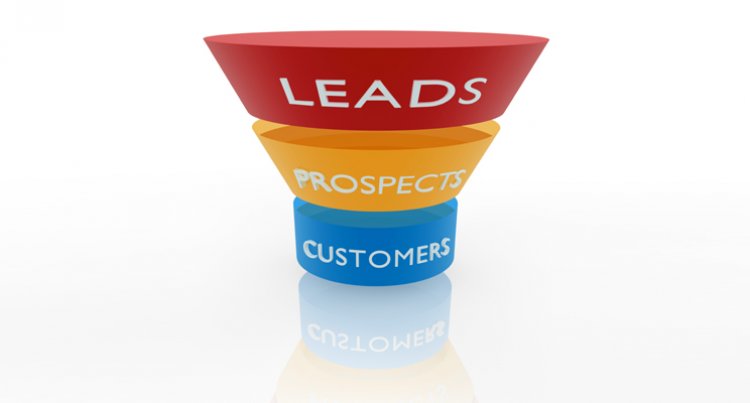Why Your Leads Aren’t Converting (It’s Not What You Think)
Josh Denning, Founder, Authority Factory

According to HubSpot, 74 percent of marketers say converting leads is their top priority.
But, in a recent survey by DemandWave, roughly half of all the respondents admitted that gaining consensus internally on what constitutes a qualified sales lead is their biggest challenge.
The truth is, while many business owners understand the importance of inbound marketing, few have a consistent or integrated system for determining the sales-readiness of a lead.
What is Lead Scoring?
Lead scoring is a shared sales and marketing methodology for ranking leads in order to determine their sales-readiness.
With lead scoring, prospects are ranked in order of how interested they are in your business, how far along they are in the buyer’s journey, and how well they fit your customer avatar.
Gaining insight into your prospects’ behaviors is important, because it streamlines your lead flow process and improves productivity between marketing and sales.
When both departments are on the same page, everything else falls nicely into place.
How to Score Leads
It’s easy to feel overwhelmed when lead scoring. There’s data to mine, technology to choose, and scoring parameters to define.
The following four steps will help simplify the process:
1. Define your goal.
Before creating a scoring model, you need to identify your goal.
What, specifically, are you trying to achieve?
Many business owners have a high number of prospects, but few that qualify. Others have a highly-nurtured pipeline of leads ready to convert, but don’t have enough inquiries to continually grow the business.
Getting your objective right is crucial, because it’s exactly what your scoring engine will be geared toward.
2. Align your sales and marketing objectives.
According to MarketingSherpa research, 73 percent of all B2B leads are not sales-ready.
Often, they need nurturing, and that’s exactly where marketing comes in. The problem, though, is when a lead is passed early—without being nurtured, first—it wastes time for all parties involved.
To avoid this, marketing and sales need to align and create an ideal customer and define what constitutes as a sales-ready lead.
When marketing and sales are in agreement, efficiency and productivity improves and everyone’s happy—including your prospects.
It’s important to mention here that scoring leads isn’t about cherry-picking “hot” leads while ignoring the rest. Rather, it’s about ensuring you’re reaching out to the right prospects at the right time.
While there are multiple factors to consider, the most effective lead scoring system incorporates the following elements:
- Fit. How well your leads fit your target criteria.
- Demographic. Where your prospect works, how much money they earn, their job titles, etc.
- Behavior. How your prospects are interacting with your campaigns. Are they opening your emails, clicking your links, etc.?
- Propensity to buy. How likely a prospect is to make a purchase.
3. Create a score.
After you’ve identified the critical factors that will influence your lead score, you’re ready to create the lead system, itself. While a lead methodology can use grades or terms like “hot” or “cold”, the most popular is the use of a point system.
Write down all the behaviors a prospect can take (e.g. visiting a pricing page, downloading a white paper, opening an email) and assign a point to each one. For example, you might score a prospect +10 for visiting a pricing page, because the prospect is further along in the buyer’s journey; whereas, a prospect at the beginning and opting in for your newsletter might only score +1.
While this is often done through marketing automation like Infusionsoft, it’s good to have numbers in mind when familiarizing yourself in the beginning.
Finally, determine a score threshold that will indicate when a “sales-ready” lead. When marketing hits this number, they know a prospect is ready to be passed over.
4. Continue to iterate.
Lead scoring is not a set-it-and-forget-it exercise. Over time, your market, prospects, and products will evolve, and it’s important your business evolve with it.
With each action a qualified prospect takes, their lead score will change. That’s why it’s crucial to ensure that a re-scoring process will be triggered automatically by each action and with each day that passes.
Don’t forget to subtract behavior points for any period of inactivity (also known as decay)—a lead’s score is dynamic and should reflect their buying intent at any given point in time.
Conclusion
When you invest in lead scoring, you make the most out of every lead that enters your database–and the most of your marketing and sales teams.
The more successful your marketing campaigns, the more effective your lead nurturing, the more and better quality sales leads, and the higher conversion rates and revenues.
About the Author
Josh Denning, founder of Authority Factory, helps high-achieving business owners generate more traffic, create more authority and capture and close more clients for their business. To learn a scalable, predictable approach to growing revenue, visit AuthorityFactory.net

















